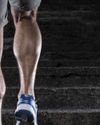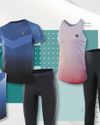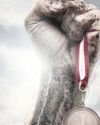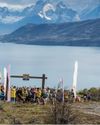Dedicated runners get to a stage where even a 2% improvement is difficult, if not impossible. How best should we seek that 2%?

Running can be so simple. An innate activity from when we first learned to walk. Yet as dedicated runners, it is sometimes anything but simple. As we seek to improve our speed and perhaps chase a PB at our next race, the modern marketing-centric world with its’ social media tentacles can complicate our thinking. When you overlay the ever-present reach of those tentacles with the science of running, confusion is a legitimate milestone, but let’s avoid it being the finish line.
A recent provoking article I came across that focused on shoe technology and the public data set of crowd-sourced running enthusiasts, who metronomically upload their running logs (and shoe choice history) was the catalyst for this article. Whilst in some ways it was ultimately a combined pitch for a running Saas application and a marketing leader in the sports and lifestyle sector, if you only have one leading product or service to sell in a new season, then that is an understandable focus. The thrust of the article was the potential 4% improvement you may gain in wearing this new shoe, given the dataset.
IS 4%... OR EVEN 2% IMPROVEMENT REALISTIC?
When Usain Bolt broke the 100m world record in Beijing, he ran 9.58 secs, improving his prior record by 1.14%. For the 200M record, Bolt’s best improvement was 0.57%. In the sprinting stakes, FloJo’s 10.49 record in 1988 versus the prior record of 10.76 meant a massive 2.51% improvement. Whilst the overhanging questions on the quantum of improvement still persist, in part because of the time still being a record from the pre-WADA days, the percentage improvement compared to the prior record is an interesting benchmark that highlights how tough a 2% improvement really is.
But sprinting, with its shorter distances is not the same as distance running you say as the base time is lower! Is this so?
This story is from the October/November 2018 edition of RUN Singapore.
Start your 7-day Magzter GOLD free trial to access thousands of curated premium stories, and 9,000+ magazines and newspapers.
Already a subscriber ? Sign In
This story is from the October/November 2018 edition of RUN Singapore.
Start your 7-day Magzter GOLD free trial to access thousands of curated premium stories, and 9,000+ magazines and newspapers.
Already a subscriber? Sign In

The Journey To Injury Free Running
How physiotherapists help you stay active, injury-free

Maximizing Potential For Tomorrow
Lim Yao Peng shares his sports and running passion with the next generation.

The Key To Record Breaking Performances?
Running shoes: how science can help you to run faster and more efficiently

Running Makes You Smarter -- Here's How
The science behind how your brain gains as you train.

TIME TO FLY
Hoka One One may still be the new kid on the block, but the sports shoe brand is already showing the way with its innovative engineering.
THE VEGANS ARE COMING
What's fuelling the interest in plant-based eating?

THE HARDER THE STRUGGLE, THE GREATER THE REWARD
In 1981, Rob de Castella was the fastest marathoner in the world. He recounts his rise to the top and tells us about his current project.

BEATING THE HEAT ON YOUR RUNS
Find your PURPOSE this season.

SUPPORTING CHAMPIONS
The journey towards a fitter, stronger and better version of yourself through sport is not always an easy road. Marathoner Ashley Liew, triathlete Ahmad Arif Ibrahim, and trail runner Ong Kian Tiong share with us how their coaches and mentors helped to encourage and motivate them to bring out the best in their sporting abilities. They tell us of their doubts and struggles, and why the presence of an experienced mentor is vital in helping them achieve their best.

AT THE EDGE OF SOUTH AMERICA
Run wild, but safe, at the 2020 Patagonian International Marathon